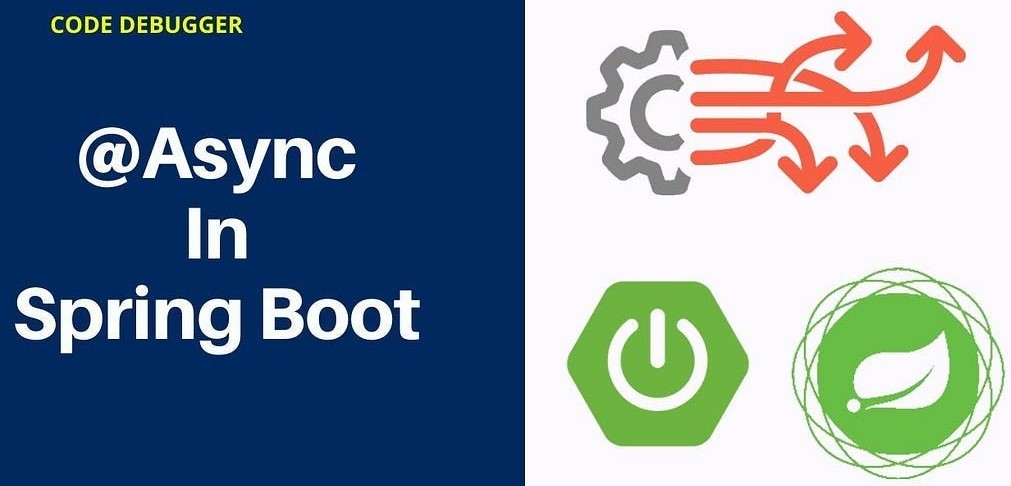SpringBoot Task
|总字数:6.3k|阅读时长:26分钟|浏览量:|
参数详解
1
2
3
4
5
6
7
8
9
10
11
12
13
14
15
16
17
18
19
20
21
22
23
| @Target({ElementType.METHOD, ElementType.ANNOTATION_TYPE})
@Retention(RetentionPolicy.RUNTIME)
@Documented
@Repeatable(Schedules.class)
public @interface Scheduled {
String CRON_DISABLED = "-";
String cron() default "";
String zone() default "";
long fixedDelay() default -1;
String fixedDelayString() default "";
long fixedRate() default -1;
String fixedRateString() default "";
long initialDelay() default -1;
String initialDelayString() default "";
}
|
fixedDelay
它的间隔时间是根据上次任务结束的时候开始计时的,只要盯紧上一次任务执行结束的时间即可,跟任务逻辑的执行时间无关,两个任务的间隔时间是固定的

fixedDelayString
与 fixedDalay 一样,不同的是使用的是 String 字符串,支持占位符方式
1
2
3
4
| @Scheduled(fixedDelayString = "${time.fixedDelay}")
public void test() {
System.out.println("Execute at " + System.currentTimeMillis());
}
|
fixedRate
在理想情况下,下一次开始和上一次开始之间的时间间隔是一定的,但是默认情况下 SpringBoot 定时任务是单线程执行的。当下一轮的任务满足时间策略后任务就会加入队列,即当本次任务开始执行时下一次任务的时间就已经确定了,由于本次任务的“超时”执行,下一次任务的等待时间就会被压缩甚至阻塞

fixedRateString
与 fixedRate 一样,不同的是使用的是 String 字符串,支持占位符方式
initialDelay
这个参数只能配合 fixedDelay 或 fixedRate 使用。如:@Scheduled(initialDelay = 10000, fixedRate = 15000),意思是在容器启动后,延迟 10 秒再执行一次定时器,以后每 15 秒再执行一次该定时器
initialDelayString
与 initialDelay 一样,不同的是使用的是 String 字符串,支持占位符方式
cron 表达式
语法格式:
-
秒 分 小时 月份中的日期 月份 星期中的日期 年份
-
秒 分 小时 月份中的日期 月份 星期中的日期
| 字段 |
值 |
特殊字符 |
| 秒(Seconds) |
0~59 的整数 |
, - * / |
| 分(Minutes) |
0~59 的整数 |
, - * / |
| 小时(Hours) |
0~23 的整数 |
, - * / |
| 日期(DayofMonth) |
1~31 的整数(需要看月的天数) |
, - * ? / L W C |
| 月份(Month) |
1~12 的整数 |
, - * / |
| 星期(DayOfWeek) |
1~7 的整数 |
, - * ? / L W C |
| 年(Year)(可选) |
1970~2099 |
, - * / |
-
*:表示匹配该域的任意值。
例如:在 Minutes 域使用*,即表示每分钟都会触发事件
-
?:只能用在 DayofMonth 和 DayofWeek 两个域,它也匹配域的任意值,但实际不会,因为 DayofMonth 和 DayofWeek 会相互影响。
例如:在每月的 20 日触发任务,不管 20 日是星期几,只能使用如下写法:13 13 15 20 * ?,其中最后一位只能用?,而不能使用*,如果使用*表示不管星期几都会触发
-
-:表示范围。
例如:在 Minutes 域使用 5-20,表示从 5 到 20 分钟每分钟触发一次
-
/:表示起始时间开始触发,然后每隔固定时间触发一次。
例如:在 Minutes 域使用 5/20,则意味着从第 5 分钟开始,每隔 20 分钟触发一次
-
,:表示列出枚举值。
例如:在 Minutes 域使用 5,20,则意味着在 5 和 20 分都会触发一次
-
L:表示最后,只能出现在 DayofWeek 和 DayofMonth 域。
例如:在 DayofWeek 域使用 5L,意味着在最后的一个星期四触发
-
W:表示有效工作日(周一到周五),只能出现在 DayofMonth 域,系统将在离指定日期的最近的有效工作日触发事件。
例如:在 DayofMonth 使用 5W,如果 5 日是星期六,则将在最近的工作日(星期五,即 4 日触发);如果 5 日是星期天,则在 6 日(星期一)触发;如果 5 日在星期一到星期五中的一天,则就在 5 日触发。注意:W 的最近寻找不会跨过月份
-
LW:这两个字符可以连用,表示在某个月最后一个工作日,即最后一个星期五
-
#:用于确定每个月第 n 个星期 x(x#n),只能出现在 DayofMonth 域。
例如:4#2 表示第 2 个星期三
常用表达式参考
1
2
3
4
5
6
7
8
9
10
11
12
13
14
15
16
17
18
19
20
21
22
23
24
25
26
27
28
| "*/5 * * * * ?" # 每隔5秒执行一次
"0 */1 * * * ?" # 每隔1分钟执行一次
"0 0 23 * * ?" # 每天23点执行一次
"0 0 1 * * ?" # 每天凌晨1点执行一次
"0 0 1 1 * ?" # 每月1号凌晨1点执行一次
"0 0 23 L * ?" # 每月最后一天23点执行一次
"0 0 1 ? * L" # 每周星期天凌晨1点实行一次:
"0 26,29,33 * * * ?" # 在26分、29分、33分执行一次
"0 0 0,3,8,21 * * ?" # 每天的0点、3点、8点、21点执行一次
"0 0 10,14,16 * * ?" # 每天上午10点,下午2点,4点
"0 0/30 9-17 * * ?" # 朝九晚五工作时间内每半小时
"0 0 12 ? * WED" # 表示每个星期三中午12点
"0 0 12 * * ?" # 每天中午12点触发
"0 15 10 ? * *" # 每天上午10:15触发
"0 15 10 * * ?" # 每天上午10:15触发
"0 15 10 * * ? *" # 每天上午10:15触发
"0 15 10 * * ?" # 2005" 2005年的每天上午10:15触发
"0 * 14 * * ?" # 在每天下午2点到下午2:59期间的每1分钟触发
"0 0/5 14 * * ?" # 在每天下午2点到下午2:55期间的每5分钟触发
"0 0/5 14,18 * * ?" # 在每天下午2点到2:55期间和下午6点到6:55期间的每5分钟触发
"0 0-5 14 * * ?" # 在每天下午2点到下午2:05期间的每1分钟触发
"0 10,44 14 ? 3 WED" # 每年三月的星期三的下午2:10和2:44触发
"0 15 10 ? * MON-FRI" # 周一至周五的上午10:15触发
"0 15 10 15 * ?" # 每月15日上午10:15触发
"0 15 10 L * ?" # 每月最后一日的上午10:15触发
"0 15 10 ? * 6L" # 每月的最后一个星期五上午10:15触发
"0 15 10 ? * 6#3" # 每月的第三个星期五上午10:15触发
"0 15 10 ? * 6L 2002-2005" # 2002年至2005年的每月的最后一个星期五上午10:15触发
|
基本使用
1
2
3
4
5
| <dependency>
<groupId>org.springframework.boot</groupId>
<artifactId>spring-boot-starter-web</artifactId>
<version>2.3.12.RELEASE</version>
</dependency>
|
1
2
3
4
5
6
7
8
9
| @SpringBootApplication
@EnableScheduling
public class SpringtaskApplication {
public static void main(String[] args) {
SpringApplication.run(SpringtaskApplication.class, args);
}
}
|
1
2
3
4
5
6
7
8
9
10
11
12
13
14
15
16
17
18
19
20
21
22
23
| @Component
public class TaskService01 {
@Scheduled(fixedDelay = 1000)
public void task01(){
System.out.println("fixedDelay....");
}
@Scheduled(fixedRate = 1000)
public void task02(){
System.out.println("fixedRate....");
}
@Scheduled(initialDelay = 10000,fixedDelay = 1000)
public void task03(){
System.out.println("initialDelay");
}
@Scheduled(cron = "1 * * * * *")
public void task04(){
System.out.println("cron");
}
}
|
定时任务配置
@EnableScheduling 注解引入了 ScheduledAnnotationBeanPostProcessor 其 setScheduler(Object scheduler) 有以下的注释:
如果 TaskScheduler 或者 ScheduledExecutorService 没有定义为该方法的参数,该方法将在 Spring IoC 中寻找唯一的 TaskScheduler 或者名称为 taskScheduler 的 Bean 作为参数,当然你按照查找 TaskScheduler 的方法找一个 ScheduledExecutorService 也可以。要是都找不到那么只能使用本地单线程调度器了


执行器
SpringBoot 内默认自动配置 TaskExecutor 任务执行器线程池,主要用于执行单次任务
自动配置条件
- 当类路径下存在 ThreadPoolTaskExecutor 类
- 当 Spring 容器中不存在 Executor 的 bean
1
2
3
4
5
6
7
8
9
10
11
12
13
14
15
16
17
18
19
20
21
22
23
24
25
26
27
28
29
30
31
32
33
34
35
36
37
|
@ConditionalOnClass(ThreadPoolTaskExecutor.class)
@Configuration(proxyBeanMethods = false)
@EnableConfigurationProperties(TaskExecutionProperties.class)
public class TaskExecutionAutoConfiguration {
public static final String APPLICATION_TASK_EXECUTOR_BEAN_NAME = "applicationTaskExecutor";
@Bean
@ConditionalOnMissingBean
public TaskExecutorBuilder taskExecutorBuilder(TaskExecutionProperties properties,
ObjectProvider<TaskExecutorCustomizer> taskExecutorCustomizers,
ObjectProvider<TaskDecorator> taskDecorator) {
TaskExecutionProperties.Pool pool = properties.getPool();
TaskExecutorBuilder builder = new TaskExecutorBuilder();
builder = builder.queueCapacity(pool.getQueueCapacity());
builder = builder.corePoolSize(pool.getCoreSize());
builder = builder.maxPoolSize(pool.getMaxSize());
builder = builder.allowCoreThreadTimeOut(pool.isAllowCoreThreadTimeout());
builder = builder.keepAlive(pool.getKeepAlive());
Shutdown shutdown = properties.getShutdown();
builder = builder.awaitTermination(shutdown.isAwaitTermination());
builder = builder.awaitTerminationPeriod(shutdown.getAwaitTerminationPeriod());
builder = builder.threadNamePrefix(properties.getThreadNamePrefix());
builder = builder.customizers(taskExecutorCustomizers.orderedStream()::iterator);
builder = builder.taskDecorator(taskDecorator.getIfUnique());
return builder;
}
@Lazy
@Bean(name = { APPLICATION_TASK_EXECUTOR_BEAN_NAME,
AsyncAnnotationBeanPostProcessor.DEFAULT_TASK_EXECUTOR_BEAN_NAME })
@ConditionalOnMissingBean(Executor.class)
public ThreadPoolTaskExecutor applicationTaskExecutor(TaskExecutorBuilder builder) {
return builder.build();
}
}
|
线程池配置
TaskExecutionProperties 默认值:
- 线程名称前缀:threadNamePrefix = “task-”
- 核心线程数:coreSize = 8
- 最大线程数:maxSize = Integer.MAX_VALUE
- 非核心线程存活时长:keepAlive = Duration.ofSeconds(60)
调度器
SpringBoot 内默认自动配置 TaskScheduler 任务调度器线程池,主要用于执行周期性任务
自动配置条件
- 当类路径下存在 ThreadPoolTaskScheduler 类
- 当 Spring 容器中不存在 SchedulingConfigurer 、 TaskScheduler 、ScheduledExecutorService 的 bean
1
2
3
4
5
6
7
8
9
10
11
12
13
14
15
16
17
18
19
20
21
22
23
24
25
26
27
| @ConditionalOnClass(ThreadPoolTaskScheduler.class)
@Configuration(proxyBeanMethods = false)
@EnableConfigurationProperties(TaskSchedulingProperties.class)
@AutoConfigureAfter(TaskExecutionAutoConfiguration.class)
public class TaskSchedulingAutoConfiguration {
@Bean
@ConditionalOnBean(name = TaskManagementConfigUtils.SCHEDULED_ANNOTATION_PROCESSOR_BEAN_NAME)
@ConditionalOnMissingBean({ SchedulingConfigurer.class, TaskScheduler.class, ScheduledExecutorService.class })
public ThreadPoolTaskScheduler taskScheduler(TaskSchedulerBuilder builder) {
return builder.build();
}
@Bean
@ConditionalOnMissingBean
public TaskSchedulerBuilder taskSchedulerBuilder(TaskSchedulingProperties properties,
ObjectProvider<TaskSchedulerCustomizer> taskSchedulerCustomizers) {
TaskSchedulerBuilder builder = new TaskSchedulerBuilder();
builder = builder.poolSize(properties.getPool().getSize());
Shutdown shutdown = properties.getShutdown();
builder = builder.awaitTermination(shutdown.isAwaitTermination());
builder = builder.awaitTerminationPeriod(shutdown.getAwaitTerminationPeriod());
builder = builder.threadNamePrefix(properties.getThreadNamePrefix());
builder = builder.customizers(taskSchedulerCustomizers);
return builder;
}
}
|
- 当 Spring 容器中存在名字叫 org.springframework.context.annotation.internalScheduledAnnotationProcessor (需要配置 @EnableScheduling 注解将会注入这个名字的 bean)
1
2
3
4
5
6
| @Target(ElementType.TYPE)
@Retention(RetentionPolicy.RUNTIME)
@Import(SchedulingConfiguration.class)
@Documented
public @interface EnableScheduling {
}
|
1
2
3
4
5
6
7
8
9
10
| @Configuration
@Role(BeanDefinition.ROLE_INFRASTRUCTURE)
public class SchedulingConfiguration {
@Bean(name = TaskManagementConfigUtils.SCHEDULED_ANNOTATION_PROCESSOR_BEAN_NAME)
@Role(BeanDefinition.ROLE_INFRASTRUCTURE)
public ScheduledAnnotationBeanPostProcessor scheduledAnnotationProcessor() {
return new ScheduledAnnotationBeanPostProcessor();
}
}
|
线程池配置
TaskSchedulingProperties 默认配置值:
- 线程名称前缀:threadNamePrefix = “scheduling-”
- 线程数:size = 1
该配置的自定义配置以 spring.task.scheduling 开头。同时它需要在任务执行器配置 TaskExecutionAutoConfiguration 配置后才生效。我们只需要在中对其配置属性 spring.task.execution 相关属性配置即可。
注意:定义任务默认用的是 TaskSchedulingAutoConfiguration 实例化的 Bean(applicationTaskExecutor、taskScheduler)
Properties 配置
1
2
3
4
5
6
7
8
9
10
11
12
13
14
15
16
17
18
19
20
21
22
23
24
25
26
27
28
|
spring.task.scheduling.pool.size=1
spring.task.scheduling.thread-name-prefix=scheduling-
spring.task.scheduling.shutdown.await-termination=true
spring.task.scheduling.shutdown.await-termination-period=60
spring.task.execution.pool.allow-core-thread-timeout=true
spring.task.execution.pool.core-size=8
spring.task.execution.pool.keep-alive=60s
spring.task.execution.pool.max-size=16
spring.task.execution.pool.queue-capacity=10
spring.task.execution.shutdown.await-termination=true
spring.task.execution.shutdown.await-termination-period=60
spring.task.execution.thread-name-prefix=task-
|
TaskSchedulingAutoConfiguration 源码
当 Spring Boot 应用程序中没有定义自定义的线程池 bean 时,Spring Boot 应用程序会根据自动配置类注入一个名为 applicationTaskExecutor 或 taskExecutor 的线程池对象,它的配置是在 TaskExecutionProperties 类中完成的,这个类使用 spring.task.execution 前缀进行配置,包含了很多线程池相关细节的配置选项,当我们容器中存在自定义线程池时,applicationTaskExecutor 或 taskExecutor 的线程池对象是不会被创建的。
@Async 注解相关配置
使用@Async 注解没有指定 value 属性时,项目启动的时候会有这样的提示:“在上下文中找到多个 TaskExecutor bean,并且没有一个名为’ taskExecutor’。将其中一个标记为 primary 或将其命名为’taskExecutor’(可能作为别名),以便将其用于异步处理”
1
2
3
4
5
6
7
8
9
10
11
12
13
14
15
16
17
18
19
20
21
22
23
24
25
26
27
28
|
@Bean
@Primary
public ThreadPoolTaskExecutor threadPoolTaskExecutor() {
ThreadPoolTaskExecutor executor = new ThreadPoolTaskExecutor();
executor.setThreadNamePrefix("my-free-style-");
executor.setMaxPoolSize(maxPoolSize);
executor.setCorePoolSize(corePoolSize);
executor.setQueueCapacity(queueCapacity);
executor.setKeepAliveSeconds(keepAliveSeconds);
executor.setRejectedExecutionHandler(new ThreadPoolExecutor.CallerRunsPolicy());
return executor;
}
@Bean(name = "taskExecutor")
public ThreadPoolTaskExecutor threadPoolTaskExecutor() {
ThreadPoolTaskExecutor executor = new ThreadPoolTaskExecutor();
executor.setThreadNamePrefix("my-free-style-");
executor.setMaxPoolSize(maxPoolSize);
executor.setCorePoolSize(corePoolSize);
executor.setQueueCapacity(queueCapacity);
executor.setKeepAliveSeconds(keepAliveSeconds);
executor.setRejectedExecutionHandler(new ThreadPoolExecutor.CallerRunsPolicy());
return executor;
}
|
任务阻塞
出现原因
Spring 中@EnableScheduling 和@Scheduled 标注的定时任务默认单线程同步执行,多个任务时,一个任务执行完毕以后才能执行下一个任务,可能会有阻塞现象发生(如果希望并发运行,需要配置线程池)
1
2
3
4
5
6
7
8
| @SpringBootApplication
@EnableScheduling
public class SpringbootTaskApplication {
public static void main(String[] args) {
SpringApplication.run(SpringbootTaskApplication.class, args);
}
}
|
1
2
3
4
5
6
7
8
9
10
11
12
13
14
15
16
17
18
| @Component
@Slf4j
public class ScheduleTask1 {
@Scheduled(cron = "*/2 * * * * ?")
public void task1() throws InterruptedException {
log.info("我是task1,我需要执行 10s 钟的时间,我的线程的 id == > {},时间 == >{}", Thread.currentThread().getId(), new Date());
Thread.sleep(10000);
log.info("我是task1 ending ,我的线程的 id == > {} , 时间 == > {}", Thread.currentThread().getId(), new Date());
}
@Scheduled(cron = "*/4 * * * * ?")
public void task2() throws InterruptedException {
log.info("我是task2,我需要执行 2s 钟的时间,我的线程的 id == > {},时间 == >{}", Thread.currentThread().getId(), new Date());
Thread.sleep(2000);
log.info("我是task2 ending ,我的线程的 id == > {} , 时间 == > {}",Thread.currentThread().getId(), new Date());
}
}
|
1
2
3
4
5
6
7
|
我是task1,我需要执行 10s 钟的时间,我的线程的 id == > 95,时间 == >Fri Feb 01 15:16:52 CST 2019
我是task1 ending ,我的线程的 id == > 95 , 时间 == > Fri Feb 01 15:17:02 CST 2019
我是task2,我需要执行 2s 钟的时间,我的线程的 id == > 95,时间 == >Fri Feb 01 15:17:02 CST 2019
task2 ending ,我的线程的 id == > 95 , 时间 == > Fri Feb 01 15:17:04 CST 2019
我是task1,我需要执行 10s 钟的时间,我的线程的 id == > 95,时间 == >Fri Feb 01 15:17:04 CST 2019
task1 ending ,我的线程的 id == > 95 , 时间 == > Fri Feb 01 15:17:14 CST 2019
|
可以看出,从 task1 任务运行时,等到 4s 时,task2 任务没有执行,而是等到 task1 任务执行结束后才执行
解决方法
使用@Async 异步执行任务
1
2
3
4
5
6
7
8
9
| @SpringBootApplication
@EnableScheduling
@EnableAsync
public class SpringbootTaskApplication {
public static void main(String[] args) {
SpringApplication.run(SpringbootTaskApplication.class, args);
}
}
|
- 使用默认线程池配置
@Async默认的线程池配置是Bean名称为taskExecutor的类
1
2
3
4
5
6
7
8
9
10
11
12
13
14
15
16
17
18
19
20
| @Component
@Slf4j
public class ScheduleTask2 {
@Async
@Scheduled(cron = "*/2 * * * * ?")
public void task1() throws InterruptedException {
log.info("我是task1,我需要执行 10s 钟的时间,我的线程的 id == > {},时间 == >{}", Thread.currentThread().getId(), new Date());
Thread.sleep(10000);
log.info("我是task1 ending ,我的线程的 id == > {} , 时间 == > {}", Thread.currentThread().getId(), new Date());
}
@Async
@Scheduled(cron = "*/4 * * * * ?")
public void task2() throws InterruptedException {
log.info("我是task2,我需要执行 2s 钟的时间,我的线程的 id == > {},时间 == >{}", Thread.currentThread().getId(), new Date());
Thread.sleep(2000);
log.info("我是task2 ending ,我的线程的 id == > {} , 时间 == > {}",Thread.currentThread().getId(), new Date());
}
}
|
- 自定义线程池配置
通过指定Bean名称来决定使用哪个线程池,用户可以自定义线程池配置
1
2
3
4
5
6
7
8
9
10
11
12
13
14
15
16
17
18
19
20
21
22
23
24
25
26
27
28
29
30
31
32
33
34
35
36
37
38
39
40
41
42
43
44
45
46
47
48
49
50
51
52
| @Component
@Slf4j
public class ScheduleTask3 {
@Async("myPoolTaskExecutor")
@Scheduled(cron = "*/2 * * * * ?")
public void task1() throws InterruptedException {
log.info("我是task1,我需要执行 10s 钟的时间,我的线程的 id == > {},时间 == >{}", Thread.currentThread().getId(), new Date());
Thread.sleep(10000);
log.info("我是task1 ending ,我的线程的 id == > {} , 时间 == > {}", Thread.currentThread().getId(), new Date());
}
@Async("myPoolTaskExecutor")
@Scheduled(cron = "*/4 * * * * ?")
public void task2() throws InterruptedException {
log.info("我是task2,我需要执行 2s 钟的时间,我的线程的 id == > {},时间 == >{}", Thread.currentThread().getId(), new Date());
Thread.sleep(2000);
log.info("我是task2 ending ,我的线程的 id == > {} , 时间 == > {}",Thread.currentThread().getId(), new Date());
}
@Bean(name = "myPoolTaskExecutor")
public ThreadPoolTaskExecutor getMyPoolTaskExecutor() {
ThreadPoolTaskExecutor taskExecutor = new ThreadPoolTaskExecutor();
taskExecutor.setCorePoolSize(10);
taskExecutor.setMaxPoolSize(100);
taskExecutor.setQueueCapacity(50);
taskExecutor.setKeepAliveSeconds(200);
taskExecutor.setThreadNamePrefix("poolTestThread-");
taskExecutor.setRejectedExecutionHandler(new ThreadPoolExecutor.CallerRunsPolicy());
taskExecutor.initialize();
System.out.println("@Async 业务处理线程配置成功,核心线程池:[{}],最大线程池:[{}],队列容量:[{}],线程名称前缀:[{}]");
return taskExecutor;
}
}
|
执行结果
1
2
3
4
5
6
7
8
9
10
11
|
我是task2,我需要执行 2s 钟的时间,我的线程的 id == > 116,时间 == >Fri Feb 01 16:19:32 CST 2019
我是task1,我需要执行 10s 钟的时间,我的线程的 id == > 117,时间 == >Fri Feb 01 16:19:32 CST 2019
我是task1,我需要执行 10s 钟的时间,我的线程的 id == > 124,时间 == >Fri Feb 01 16:19:34 CST 2019
task2 ending ,我的线程的 id == > 116 , 时间 == > Fri Feb 01 16:19:34 CST 2019
我是task1,我需要执行 10s 钟的时间,我的线程的 id == > 125,时间 == >Fri Feb 01 16:19:36 CST 2019
我是task2,我需要执行 2s 钟的时间,我的线程的 id == > 126,时间 == >Fri Feb 01 16:19:36 CST 2019
我是task1,我需要执行 10s 钟的时间,我的线程的 id == > 127,时间 == >Fri Feb 01 16:19:38 CST 2019
task2 ending ,我的线程的 id == > 126 , 时间 == > Fri Feb 01 16:19:38 CST 2019
我是task2,我需要执行 2s 钟的时间,我的线程的 id == > 128,时间 == >Fri Feb 01 16:19:40 CST 2019
我是task1,我需要执行 10s 钟的时间,我的线程的 id == > 129,时间 == >Fri Feb 01 16:19:40 CST 2019
|
从日志可知:task1 和 task2 的确是并行执行的,因为开始的时间节点是一样的。
存在问题:当 task1 第一次任务执行时间过长时,此时 task1 又到了其第二次执行任务的调度时间,这时会并行执行两个任务
使用@Async 会导致第一次任务执行时间过长,从而第二次任务和第一次任务并发执行
解决方法:实现 SchedulingConfigurer 接口,这样自动装配中 TaskSchedulingAutoConfiguration 的 taskScheduler 就不会被实例化,替换原来的线程池配置
1
2
3
4
5
6
7
8
9
10
11
12
13
14
| @Configuration
@Slf4j
public class ScheduleConfig implements SchedulingConfigurer {
@Override
public void configureTasks(ScheduledTaskRegistrar taskRegistrar) {
taskRegistrar.setScheduler(taskExecutor());
}
@Bean
public Executor taskExecutor(){
return Executors.newScheduledThreadPool(10);
}
}
|
1
2
3
4
5
6
7
8
9
10
11
12
13
14
15
16
17
18
| @Component
@Slf4j
public class ScheduleTask4 {
@Scheduled(cron = "*/2 * * * * ?")
public void task1() throws InterruptedException {
log.info("我是task1,我需要执行 10s 钟的时间,我的线程的 id == > {},时间 == >{}", Thread.currentThread().getId(), new Date());
Thread.sleep(10000);
log.info("我是task1 ending ,我的线程的 id == > {} , 时间 == > {}", Thread.currentThread().getId(), new Date());
}
@Scheduled(cron = "*/4 * * * * ?")
public void task2() throws InterruptedException {
log.info("我是task2,我需要执行 2s 钟的时间,我的线程的 id == > {},时间 == >{}", Thread.currentThread().getId(), new Date());
Thread.sleep(2000);
log.info("我是task2 ending ,我的线程的 id == > {} , 时间 == > {}",Thread.currentThread().getId(), new Date());
}
}
|
执行结果
1
2
3
4
5
6
7
8
9
10
11
|
我是task2,我需要执行 2s 钟的时间,我的线程的 id == > 95,时间 == >Fri Feb 01 16:28:16 CST 2019
我是task1,我需要执行 10s 钟的时间,我的线程的 id == > 96,时间 == >Fri Feb 01 16:28:16 CST 2019
task2 ending ,我的线程的 id == > 95 , 时间 == > Fri Feb 01 16:28:18 CST 2019
我是task2,我需要执行 2s 钟的时间,我的线程的 id == > 95,时间 == >Fri Feb 01 16:28:20 CST 2019
task2 ending ,我的线程的 id == > 95 , 时间 == > Fri Feb 01 16:28:22 CST 2019
我是task2,我需要执行 2s 钟的时间,我的线程的 id == > 121,时间 == >Fri Feb 01 16:28:24 CST 2019
task1 ending ,我的线程的 id == > 96 , 时间 == > Fri Feb 01 16:28:26 CST 2019
task2 ending ,我的线程的 id == > 121 , 时间 == > Fri Feb 01 16:28:26 CST 2019
我是task1,我需要执行 10s 钟的时间,我的线程的 id == > 95,时间 == >Fri Feb 01 16:28:28 CST 2019
我是task2,我需要执行 2s 钟的时间,我的线程的 id == > 122,时间 == >Fri Feb 01 16:28:28 CST 2019
|
注意:此时每次定时任务执行的 traceId 是一致的,无法很好地追踪每次定时任务的情况,修改如下
1
2
3
4
5
6
7
8
9
10
11
12
13
14
15
16
17
18
19
| @Configuration
@Slf4j
public class ScheduleConfig implements SchedulingConfigurer {
@Override
public void configureTasks(ScheduledTaskRegistrar taskRegistrar) {
ThreadPoolTaskScheduler taskScheduler = new ThreadPoolTaskScheduler();
taskScheduler.setPoolSize(10);
taskScheduler.initialize();
taskRegistrar.setScheduler(taskScheduler);
}
}
|
Properties 配置
修改默认的线程池配置,适当将调度线程池的配置修改,支持多任务并发执行
1
2
3
4
5
6
7
8
9
10
11
12
13
14
15
16
17
18
19
20
21
22
23
24
25
26
27
28
|
spring.task.scheduling.pool.size=10
spring.task.scheduling.thread-name-prefix=scheduling-
spring.task.scheduling.shutdown.await-termination=true
spring.task.scheduling.shutdown.await-termination-period=60
spring.task.execution.pool.allow-core-thread-timeout=true
spring.task.execution.pool.core-size=8
spring.task.execution.pool.keep-alive=60s
spring.task.execution.pool.max-size=16
spring.task.execution.pool.queue-capacity=10
spring.task.execution.shutdown.await-termination=true
spring.task.execution.shutdown.await-termination-period=60
spring.task.execution.thread-name-prefix=task-
|
缺点
- 不支持集群配置,在分布式环境下会出现多个任务并发执行的情况
解决方法:通过分布式锁的方式预防任务并发执行的情况
- 不支持指定的时间范围执行任务(例如在9点到11点间执行任务,其他时间段不执行)
- 不支持分片执行任务
动态定时任务实现
出现问题
用实现 SpringBoot + @Scheduled 实现了定时任务。但是也存在很多问题:
通常,@Scheduled 注解的所有属性只在 Spring Context 启动时解析和初始化一次。因此,当在 Spring 中使用 @Scheduled 注解时,无法在运行时更改 fixedDelay 或 fixedRate 值。
- 在一个线程内执行,那么任务多了就可能被阻塞,导致任务延迟执行。
- 每次修改执行频率都要改代码,重启服务。
- 无法提供定时任务的启用、暂停、修改接口。
实现方法:参考 ScheduledTaskRegistrar 源码提供的方法
简单案例
1
2
3
4
5
6
7
8
9
10
11
12
13
14
15
16
| CREATE TABLE `sys_task` (
`id` bigint(21) NOT NULL AUTO_INCREMENT COMMENT '主键',
`task_uuid` varchar(50) DEFAULT NULL COMMENT '任务UUID',
`task_name` varchar(50) DEFAULT NULL COMMENT '任务名称',
`task_cron` varchar(50) DEFAULT NULL COMMENT '任务定时表达式',
`class_name` varchar(100) DEFAULT NULL COMMENT '任务类',
`method_name` varchar(100) DEFAULT NULL COMMENT '任务方法',
`task_type` int(1) DEFAULT NULL COMMENT '任务类型',
`remark` varchar(250) DEFAULT NULL,
`del_flag` int(1) DEFAULT '1',
`create_user` varchar(50) DEFAULT NULL,
`create_time` timestamp NULL DEFAULT CURRENT_TIMESTAMP,
`update_user` varchar(50) DEFAULT NULL,
`update_time` timestamp NULL DEFAULT CURRENT_TIMESTAMP,
PRIMARY KEY (`id`)
) ENGINE=InnoDB AUTO_INCREMENT=2 DEFAULT CHARSET=utf8
|
1
2
3
4
5
6
7
8
| @Configuration
public class ScheduledConfig {
@Bean
public ScheduledTaskRegistrar taskRegistrar() {
return new ScheduledTaskRegistrar();
}
}
|
1
2
3
4
5
6
7
8
9
| @Slf4j
public class ScheduleTask5 {
public void task1() throws InterruptedException {
log.info("我是task1,我的线程的 id == > {},时间 == >{}", Thread.currentThread().getId(), new Date());
Thread.sleep(4000);
log.info("我是task1 ending ,我的线程的 id == > {} , 时间 == > {}", Thread.currentThread().getId(), new Date());
}
}
|
1
2
3
4
5
6
7
8
9
10
11
12
13
14
15
16
17
18
19
20
21
22
23
24
25
26
27
28
29
30
31
32
33
34
35
36
37
38
39
40
41
42
43
44
45
46
47
48
49
50
51
52
53
54
55
56
57
58
59
60
61
62
63
64
65
66
67
| @Data
public class SysTask {
private Long id;
private String taskUuid;
private String taskName;
private String taskCron;
private String className;
private String methodName;
private Integer taskType;
private String remark;
private Integer delFlag;
private String createUser;
private Date createTime;
private String updateUser;
private Date updateTime;
}
|
1
2
3
4
5
6
7
8
9
10
11
12
13
14
15
16
17
18
19
20
21
22
23
24
25
26
27
28
29
30
31
32
33
34
35
36
37
38
39
40
41
42
43
44
45
46
47
48
| @Service
@Slf4j
public class CronServiceImpl implements CronService {
private static Map<String, ScheduledTask> scheduledTaskMap = new HashMap<>();
@Resource
private ScheduledTaskRegistrar taskRegistrar;
@Override
public void add(SysTask sysTask) {
CronTask cronTask = new CronTask(getRunnable(sysTask), sysTask.getTaskCron());
ScheduledTask scheduledTask = taskRegistrar.scheduleCronTask(cronTask);
String uuid = UUID.randomUUID().toString();
scheduledTaskMap.put(uuid, scheduledTask);
log.info("添加任务成功, uuid == > {}, 任务名称 == > {}, 任务表达式 == > {}", uuid, sysTask.getTaskName(), sysTask.getTaskCron());
}
private Runnable getRunnable(SysTask sysTask) {
return () -> {
try {
Class<?> aClass = Class.forName(sysTask.getClassName());
Constructor<?> constructor = aClass.getConstructor();
Object o = constructor.newInstance();
Method method = aClass.getMethod(sysTask.getMethodName());
method.invoke(o);
} catch (Exception e) {
e.printStackTrace();
}
};
}
@Override
public void delete(String uuid) {
try {
ScheduledTask scheduledTask = scheduledTaskMap.get(uuid);
scheduledTask.cancel();
scheduledTaskMap.remove(uuid);
} catch (Exception e) {
e.printStackTrace();
}
}
@Override
public void update(SysTask sysTask) {
this.delete(sysTask.getTaskUuid());
this.add(sysTask);
}
}
|
1
2
3
4
5
6
7
8
9
10
11
12
13
14
15
16
17
18
19
20
21
22
23
24
25
| @RestController
@RequestMapping("/cron")
public class CronController {
@Resource
private CronService cronService;
@PostMapping("/add")
public String add(@RequestBody SysTask sysTask) {
cronService.add(sysTask);
return "success";
}
@PostMapping("/delete")
public String delete(String uuid) {
cronService.delete(uuid);
return "success";
}
@PostMapping("/update")
public String update(@RequestBody SysTask sysTask) {
cronService.update(sysTask);
return "success";
}
}
|







